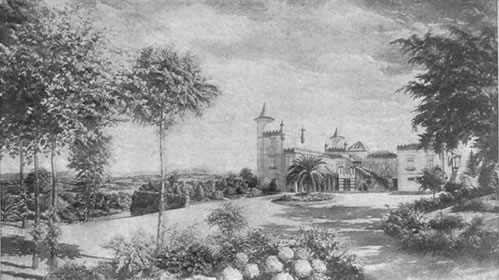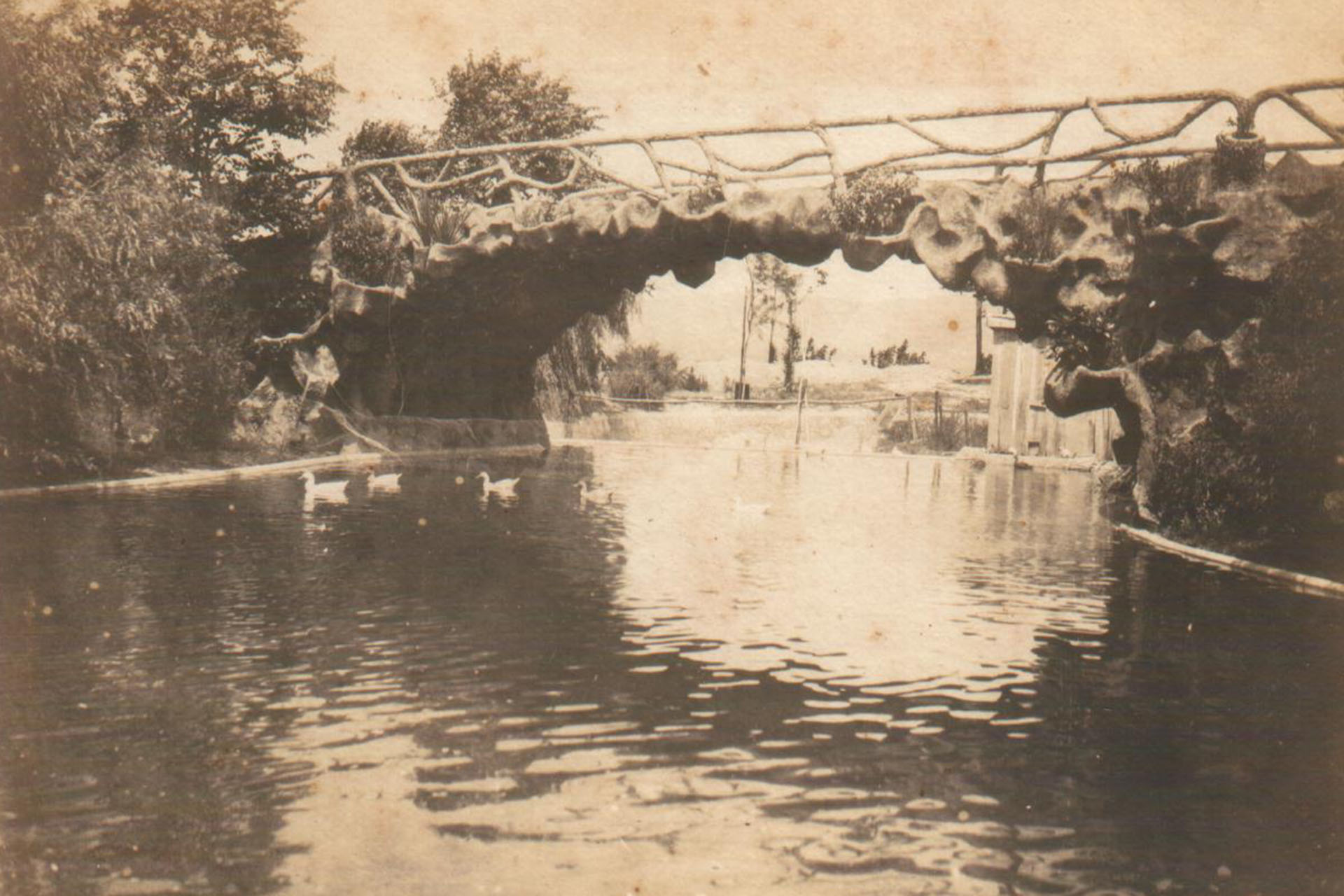Considered to be one of the most fantastic estates of the Minho region, the Quinta de Curvos has its own history, full of stories and happenings that made their mark on it over the course of the last four centuries.
An extensive area of approximately 16 hectares, surrounded by stone walls, the Quinta de Curvos is in the hamlet of Cerqueiral, Forjães parish, in the county of Esposende, right near the well-known Chesnut grove, called Souto de São Roque, where, coincidentally, around 1600 a small chapel was built dedicated to Saint Roch, the patron and defender of plagues and famines.
It was the founders of this chapel who were the owners of Quinta de Curvos at that time (then known as Quinta de Santa Marinha), Manuel Belo and his wife Ana Ribeiro.
According to João do Minho, this couple is to have "...donated the Chapel of S. Roque in 1559, located on the estate." Pascoal Pires Belo, one of the most famous members of the Belo family, was known to be a Notary and Registrar of Orphans in Esposende. It is also known that D. Teodósio, the Duke of Bragança, decreed that the position of Notary would always be assigned to whoever married the daughters of Pascoal Pires Belo and, naturally, would also be a vassal to the House of Bragança or very much attached to it.
But, turning back to the found of the Chapel of S. Roque, there were many who lived in fear of a scourge of the plague and, fearing God, they founded chapels, many of them dedicated to Saint Roch or Saint Sebastian. The inauguration of this chapel, was on the 15th of August, 1600. Thus, we can infer that the Estate itself dates back to the middle of the XVI century, although with another name.

In 1669, the estate owners of Quinta de Curvos, represented by Miguel da Cunha and Francisco Ferros, filed a lawsuit against Domingas de Miranda and her husband Manuel Pires, due to the defendant having been caught cutting wood in the Chestnut grove of S. Roque. It is because of the sentence that, much later, only in the end of the XIX century, that a lengthy lawsuit will follow between the owners of the Quinta and the people of Forjães parish.
In 1709, by notarial title dated the 27th of February, the Manor House of the Quinta de Curvos was formally named. This bond was established by the Reverend Igínio Vilas Boas, his sisters Mariana and Engrácia da Costa Vilas Boas and by his nieces Maria and Inácia. The actual document which establishes this title is no longer in existence, however, the house is listed in the inventory of 1728, under the ownership of Francisco Ferros Ponce de Leão, who had control over the estate through inheritance.
The son of Manuel Belo and Ana Ribeiro, called Jácome da Silva Ribeiro, married Isabel Dias Ferros, from the city of Viana, coming from the family of Ferros Ponce de Leão, a noble family of Spanish roots. From this marriage, Gonçalo Ferros Ponce was born, who settled in Barcelos and would later become a thriving merchant.
Gonçalo Ferros Ponce de Leão would go on to fall so deeply in love with a noblewoman from Paredes de Coura that, when faced with opposition to their marriage, he kidnapped her and they got married right away. The woman's name was Inácia da Rocha de Antas da Cunha and she would bear a son, Roque Ferros Ponce de Leão, a renowned organist in the city of Barcelos, who would later marry Luísa de Vilas Boas, daughter of António Fernandes Simão, from Barcelos, and his wife Maria da Costa, from Barcelinhos, as is recorded in the wedding papers signed in 1764. From this wedding of Roque Ferros and Luísa Vilas Boas three children were born: Francisco Ferros Ponce de Leão, Maria da Rocha Ferros e Inácio Ferros. Since Francisco was the first-born son, he would inherit Quinta de Curvos.
Dying, however, without any children, the heirs who were completely disconnected from the estate, would sell it in 1882 to Commander Domingos Gonçalves de Sá, from the neighboring parish of Aldreu but living at the time in Porto, a wealthy man married to Luísa Arminda Ferreira de Sá.
 After purchasing the estate, Commander Domingos Gonçalves de Sá filed a lawsuit specifically concerning the Chestnut grove of S. Roque, which was mentioned earlier. This court case would bring him many troubles, including making enemies of everyone in Forjães, who were intent on protecting their heritage, resulting in him having to sell the Quinta de Curvos to a buyer. The capitalist António Rodrigues Alves de Faria completed his purchase of the property on December 8, 1916.
After purchasing the estate, Commander Domingos Gonçalves de Sá filed a lawsuit specifically concerning the Chestnut grove of S. Roque, which was mentioned earlier. This court case would bring him many troubles, including making enemies of everyone in Forjães, who were intent on protecting their heritage, resulting in him having to sell the Quinta de Curvos to a buyer. The capitalist António Rodrigues Alves de Faria completed his purchase of the property on December 8, 1916.
Stepping back a few years, when António was still young-the age of only 14-he left his small village of Matinho located in Forjães, to set out for Brazil and, according to what is said, he stowed away in the hold of a cargo ship. In Brazil, in the city of Vera Cruz, he quickly made his fortune and returned to his native land where he would become a great benefactor. This is, without a doubt, the highest point in the planning and development of Quinta de Curvos, as we shall soon see. When Rodrigues de Faria dies on August 10, 1949, without leaving any direct descendants, his vast property is divided among close relatives who feel incapable of preserving such a large estate, the imposing Quinta de Curvos in particular.
In light of the state of affairs and being powerless to resolve the situation of the estate, the heirs were faced with its sale, such that in the 60's it was purchased by José Pereira Falcão, a real estate dealer from Lisbon. Some maintenance and restoration work was done, but it never reached the splendor of the time of Rodrigues Faria. The 70's were the same for the estate as it was sold again and purchased this time by a British man, who did not keep up this piece of monumental and artistic heritage.
With the Revolution in April of 1974, and in the face of fears and insecurity of the time, the Quinta de Curvos turns another page in history of centuries, and it is sold once again, this time into the hands of the Fonseca family, from the city of Braga.